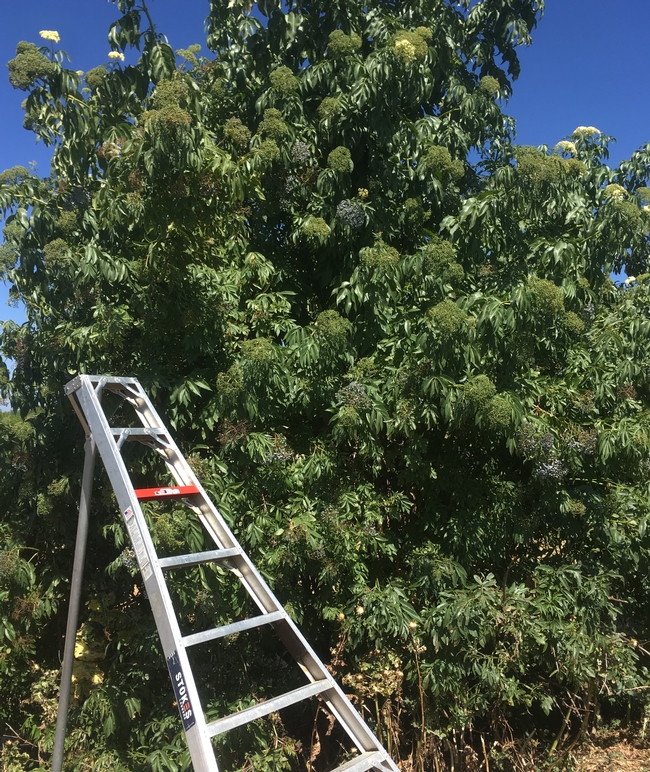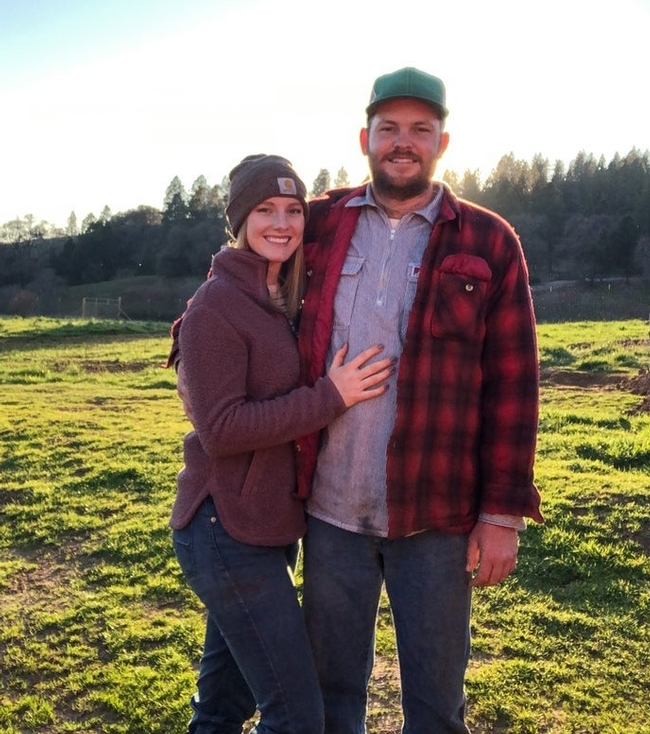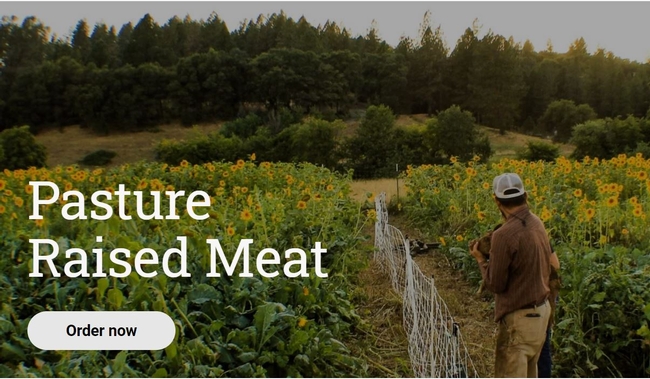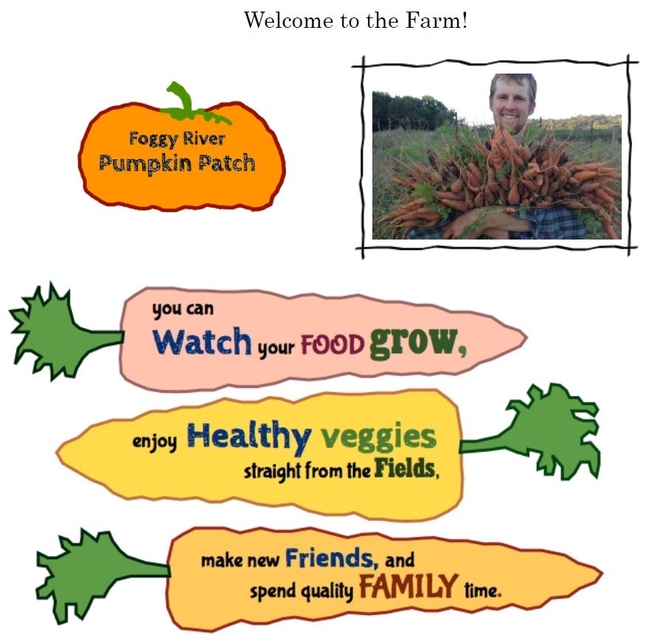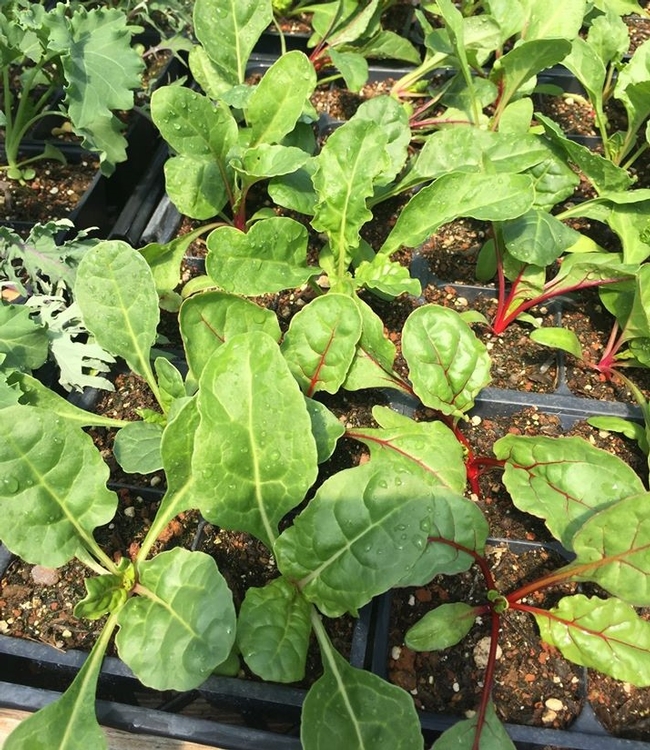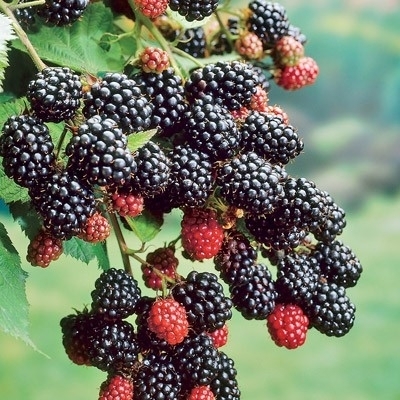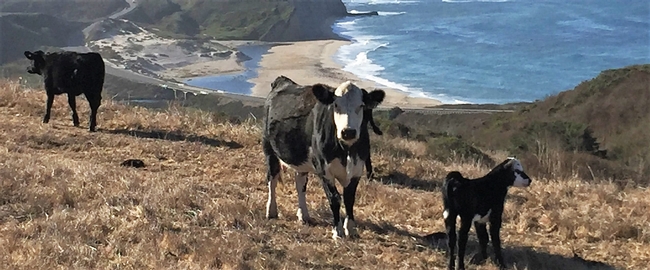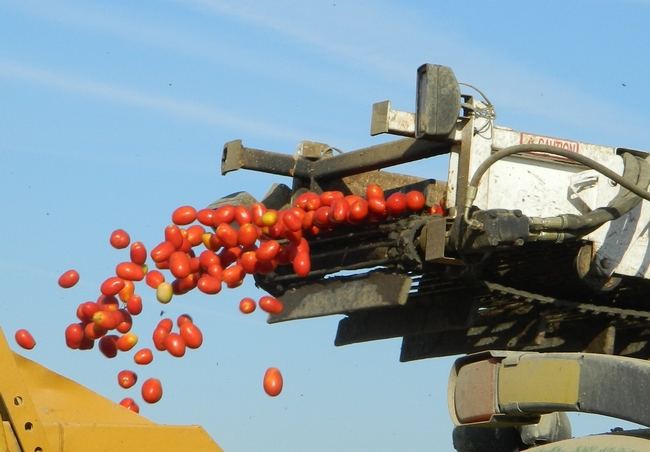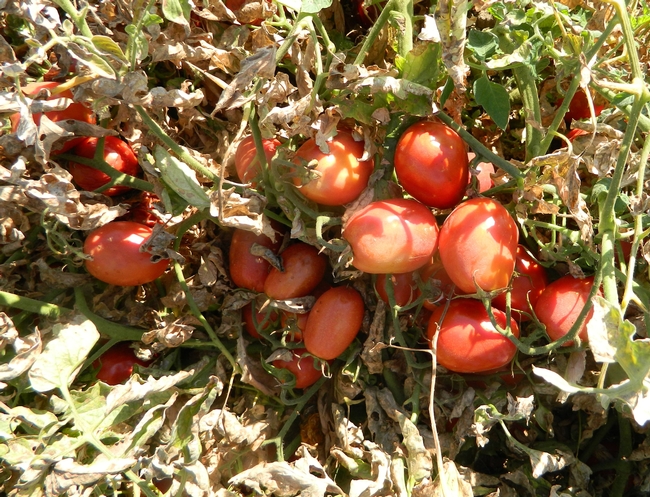Posts Tagged: production
New guide shows how elderberry activates hedgerows, ecologically and commercially
A farm-edge hedgerow can be more than a boundary or barrier. When it comprises blue elderberry, it can be a way to integrate biodiversity in an often-simplified agricultural landscape – and connect with a legacy of stewardship and use by California's Native peoples.
A new guide, published by UC Agriculture and Natural Resources, provides detailed instructions and advice for California farmers on growing, harvesting and marketing blue elderberry. It is available as a free download in the UC ANR catalog at https://anrcatalog.ucanr.edu/Details.aspx?itemNo=8709.
“It's the only publication of its kind, that we know of, that focuses on commercial production of a native species from within a hedgerow, which people normally think of as a conservation feature,” said Sonja Brodt, one of the publication's authors and associate director of UC ANR's Sustainable Agriculture Research and Education Program.
In addition to illustrating the plant's many ecological benefits, “Producing Blue Elderberry as a Hedgerow-Based Crop in California” highlights the economic viability of the products made from its flowers, berries and other components.
“Consumer interest in elderberry products is booming,” said Brodt, “and blue elderberry has the potential to meet local needs with a locally adapted species that is climate-resilient, and can be produced in a relatively low-input way that supports – rather than displaces – our native ecosystems.”
The guide incorporates the findings of a UC SAREP project exploring the farm management practices, nutritional content and market potential of elderberry products. And Brodt emphasized that this resource also draws upon the deep knowledge of Indigenous people, as well as best practices of growers such as Katie Fyhrie, formerly of The Cloverleaf Farm in Dixon and another author of the guide.
“We originally got inspiration to do this work from local farmers who are pioneering the use of blue elderberry harvested on their farms, and from Native Americans in California who have long stewarded and utilized blue elderberry for food and other cultural uses,” Brodt explained.
The other publication authors are Gwenael Engelskirchen, sustainable supply chain analyst for UC SAREP; and Katie Uhl, graduate student researcher; and Alyson Mitchell, professor in UC Davis' Department of Food Science and Technology.
UC SAREP webinars help farmers, ranchers pivot to direct sales during pandemic
The COVID-19 pandemic hit farmers hard. Supply chains were disrupted and even non-traditional agritourism revenue streams such as hay mazes and on-farm events had to be canceled due to shelter-in-place mandates.
On the other hand, demand for local farm products skyrocketed, and thus many farmers and ranchers needed a quick pivot strategy and a set of new skills.
UC Sustainable Agriculture Research and Education Program (SAREP) was well-positioned to support this shift toward direct sales, pulling in trusted community partners and experienced farmers and ranchers to put together a comprehensive webinar series, “Agritourism and Direct Sales: Best Practices in COVID Times and Beyond”.
Funded by a USDA Farmers Market Promotion Program (FMPP) grant, the webinar series is part of a three-year project, Strengthening California Local Food Networks with Agritourism and Direct Sales, which provides trainings and technical assistance to farmers and ranchers on how to diversify their revenue streams.
The strength of the series, which includes eight webinars that were recorded earlier this year and are available online, lies in the collaborations among the UC SAREP Agritourism Program, UCCE, community groups, and farmers and ranchers.
The series features a range of speakers, including representatives from community organizations, technical experts, academic researchers, and farmers – all coming together to build resilience and adaptability for small-farming operations and the agritourism industry across California during the pandemic and after.
“It's great to collaborate with other organizations and regions, to learn from each other and to broaden our networks, as we are all working to create more resilient and sustainable food systems,” said Carmen Snyder, executive director of Sonoma County Farm Trails, one of the nonprofit partners on this project.
And because of those strong partnerships, the webinar topics reflected the on-the-ground needs facing agricultural producers.
“COVID initially dramatically affected farmers' restaurant contracts, with many losing more than 80% of their accounts overnight,” Snyder said. “CSAs [Community Supported Agriculture], on the other hand, couldn't keep up with the demand, and all of our CSA members were full and had wait lists for the first time ever. Producers pivoted by creating more online stores, including pick-up and delivery options. It was a challenge for them to navigate the new technology and platforms.”
Unsurprisingly, two of the more popular webinars were “Online Sales Options and Methods” and “Safe, Healthy and Successful Farm Stands”.
The “Online Sales Options and Methods” webinar, a partnership with the Community Alliance with Family Farmers (CAFF), provided an overview of several e-commerce marketing and online sales strategies that farmers can implement to diversify their revenue pathways and reach new customers. CAFF stressed the importance of farmers enhancing their resiliency through e-commerce.
The webinar also featured Ciara Shapiro, the owner of AM Ranch in Penn Valley, who shared her experience with online marketing and how it helped her and her husband survive the pandemic when the restaurants and farmers markets they sold to shut down. This personal and informative webinar demonstrated the effectiveness of online sales and marketing, while highlighting available resources from groups like CAFF.
The “Safe, Healthy and Successful Farm Stands” webinar was aimed at farms of all sizes and organizations that operate or advise agricultural operations using farm stands as a form of revenue. The webinar provided an outline of the rules and regulations that farm stand operators needed to follow during COVID – as well as during business-as-usual times.
Both farmers saw an increase in farm stand business during the pandemic, which Yagi attributed to the “traffic storm of people” who attended their annual plant sale fundraiser and came to participate in new farm outdoor activities and volunteer opportunities. Yagi also noted the growing number of low-income individuals who were unable to access fresh produce during the pandemic.
The speakers' shared experiences running successful farm stands gave audience members tangible examples and real-time information on how to incorporate farm stands into their businesses.
Carmen Snyder of Sonoma County Farm Trails, which helped circulate the recorded webinars to their network of farmers and ranchers, remarked: “These webinars were extremely helpful for local producers, to get clarity on best pandemic practices during these challenging times and to learn how other producers are adapting and navigating the circumstances.”
First-ever UC cost study for primocane-bearing blackberries released
The first-ever cost study of primocane-bearing blackberries in California has been published by UC ANR's Agricultural Issues Center and UC Cooperative Extension. With primocane-bearing, growers can extend the blackberry production season.
“What differentiates primocane-bearing blackberry from the traditional floricane-bearing is that it bears fruit in the first year rather than the second,” explained co-author Mark Bolda, UC Cooperative Extension advisor.
“Which, of course, opens a world of opportunity for growers, since they are able to produce fruit in the first year rather than the second as has traditionally been the case,” Bolda said. “That's what makes this study so interesting to us.”
Primocanes are the green, vegetative stalks of the blackberry plant, generally the first-year cane. The second year, they become floricanes, flowering and fruiting.
The study presents sample costs to establish, produce and harvest primocane-bearing blackberries in the Central Coast Region of Santa Cruz, Monterey and San Benito counties.
The analysis is based on a hypothetical well-managed farming operation using practices common to the region. The costs, materials and practices shown in this study will not apply to all farms. Growers, UC ANR Cooperative Extension farm advisors and other agricultural associates provided input and reviewed the methods and findings of the study.
This study assumes a farm operation size of 30 contiguous acres of rented land, with primocane-bearing blackberries for fresh market planted on 15 acres. The crop is hand-harvested and packed into 4.5 pound trays. During the establishment year, there is a four-month harvest – July through August. Primocane blackberries can produce fruit on first-year growth. There is also a four-month harvest for each of the four production years.
The authors describe assumptions in detail and present a table of costs and returns based on those assumptions about production, input materials, prices and yields. A ranging analysis shows the impact on net returns of alternative yields and prices. Other tables show the monthly cash costs, the costs and returns per acre, hourly equipment costs, and the whole farm annual equipment, investment and business overhead costs.
The study also has an expanded section on labor, which includes information on California's new minimum wage and overtime laws.
“This work investigating the economics of a newer cultural system for our area came out of a close collaboration between UCCE academics and area growers,” said Bolda, who serves Santa Cruz, Monterey and San Benito counties, “so the level of detail and accuracy is outstanding.”
Free copies of this study and other sample cost of production studies for many commodities are available. To download the cost studies, visit the UC Davis Department of Agricultural and Resource Economics website at https://coststudies.ucdavis.edu
The cost and returns studies program is funded by the UC Agricultural Issues Center and UC Cooperative Extension, both of which are part of the UC Division of Agriculture and Natural Resources, and the UC Davis Department of Agricultural and Resource Economics.
For additional information or an explanation of the calculations used in the studies, contact the UC Agricultural Issues Center at (530) 752-4651 or UC Cooperative Extension advisors Mark Bolda (831) 763-8025 or Laura Tourte (831) 763-8005 in Santa Cruz County.
Thinking about going into the cattle business? New UC cost study for beef cattle operation helps ranchers plan
A new study on the costs and returns of a beef cattle operation has been released by the University of California Agriculture and Natural Resources' Agricultural Issues Center. The estimated costs can help ranchers and land management agencies on California's Central Coast make business decisions.
“This cost study can be a valuable tool for someone who is thinking about going into the cattle business because it will help them think through the various categories of costs, and aid in developing a budget and business plan,” said Devii Rao, University of California Cooperative Extension livestock and natural resources advisor for San Benito, Monterey and Santa Cruz counties.
Based on the typical costs of a 300-head cow-calf operation, the study estimates costs of an owner-operated beef cattle operation located on leased rangeland in the Central Coast region of California. The cost calculations in this study are based on economic principles that include all cash costs and uses the rental cost per animal unit month (AUM) as a cost of pasture.
“The study can also be used by a seasoned rancher,” said Rao, a co-author of the study. The first cost table has an empty column titled, “Your Costs.” This is probably one of the most useful pages for the experienced rancher. Producers can use this column to enter their own costs and compare them to the costs in the study. It will help them think about where they can make changes in their operation to reduce costs.”
The analysis is based upon a hypothetical cow-calf operation, where the cattle producer leases all rangeland. The “typical” ranch in the Central Coast is an owner-operated cow-calf operation using multiple private and public leases. The practices described represent production practices and materials considered typical of a well-managed ranch in the region.
Input and reviews for this study were provided by ranch operators, UC ANR Cooperative Extension farm advisors and other agricultural associates. A narrative describes the assumptions used to identify current costs for the cow-calf herd, material inputs, cash and non-cash overhead. A ranging analysis table shows profits over a range of average market prices. Other tables show the costs and revenue for production, monthly summary of costs and revenue, and the annual equipment, investment and business overhead costs.
“This study will also be of value to land management agencies that lease their lands for cattle grazing,” she said. “Many agency staff are not familiar with the different aspects of cow/calf operations. For land management agency staff, the most useful portion of the study is likely to be the Operations Calendar, which summarizes the timeline for breeding, branding, vaccinating, calving, shipping, etc.”
“Sample Costs for Beef Cattle – Central Coast Region – 2018” can be downloaded for free from the UC Davis Department of Agricultural and Resource Economics website at https://coststudies.ucdavis.edu. Sample cost of production studies for many other commodities are also available at the website.
For additional information or an explanation of the calculations used in the studies, contact Donald Stewart at the Agricultural Issues Center at (530) 752-4651 or destewart@ucdavis.edu.
For information about beef cattle production in the Central Coast region, contact Rao at drorao@ucanr.edu.
UC Agricultural Issues Center releases cost estimates for growing processing tomatoes
A new study on the costs and returns of producing processing tomatoes in Fresno County and the central San Joaquin Valley has been released by the UC ANR Agricultural Issues Center. Growers contemplating crops to grow may use the estimates to help decide whether to plant processing tomatoes.
The report estimates costs and returns and provides an overview of common production practices related to irrigation, fertility and pest management of processing tomatoes. In this report, some specifics are assigned and calculations are based on a hypothetical well-managed farming operation, which is described in detail.
The new study, “Sample Costs to Produce Processing Tomatoes in the San Joaquin Valley South, Fresno County – 2018,” can be downloaded for free from the UC Davis Department of Agricultural and Resource Economics website at http://coststudies.ucdavis.edu. Sample cost of production studies for many other commodities are also available.
For additional information or an explanation of the calculations used in the study, contact Jeremy Murdock at the Agricultural Issues Center at (530) 752-4651 or jmmurdock@ucdavis.edu, or Tom Turini, UCCE farm advisor for Fresno County, at taturini@ucanr.edu.

